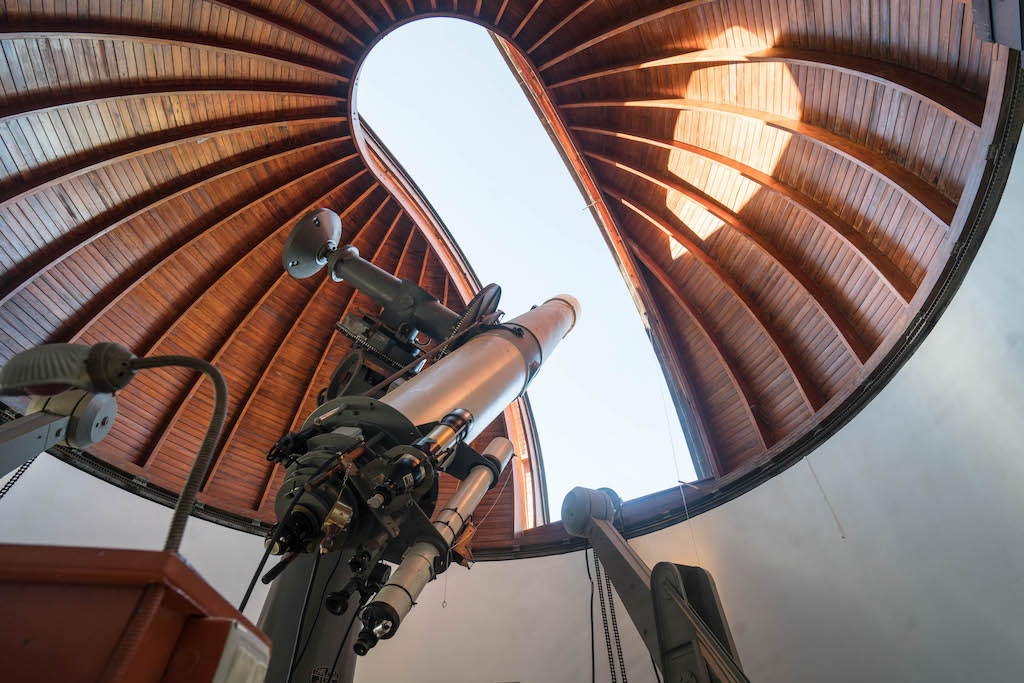The Vatican Specola promotes a scientific conference dedicated to Monsignor Georges Lemaître

Black holes, gravitational waves and space-time singularities
An international scientific conference on “Black holes, gravitational waves and space-time singularities” will be held at Castel Gandolfo from 17 to 21 June to celebrate the legacy of Msgr. Georges Lemaître (1894-1966), the Belgian physicist who developed what is now known as the Big Bang theory. The conference is promoted by the Vatican Observatory, the scientific body of the Governorate, and supported by the National Institute of Nuclear Physics (INFN), one of Italy’s most important public research institutes.
Jesuit Brother Guy J. Consolmagno and Father Gabriele Gionti, respectively, Director and Deputy Director of Castel Gandolfo’s Vatican Specola, will welcome the 40 Conference participants on Sunday evening, 16 June. Sister Raffaella Petrini, Secretary General of the Governorate of Vatican City State, a member of the Vatican Observatory Foundation, will also be present. Participants include Nobel Prize winners Adam Riess and Roger Penrose, cosmologists and theoretical physicists Andrei Linde, Joseph Silk, Wendy Freedman, Licia Verde and Cumrun Vafa, and Fields Medal recipient, Edward Witten.
The experts will explore the legacy of Msgr. Lemaître’s intuitions and discuss some fundamental themes, including, cosmology and the perplexing Hubble tension, the enigmatic nature of space-time singularities (including the Big Bang and black holes), gravitational waves and the pursuit of quantum gravity and its connections with the entanglement (fundamental link between particles constituting a quantum system) and foundations of quantum theory.
The Conference aims to promote interaction between theoretical and observational cosmologists, by providing an environment for reflections and new ideas.
In addition to scientific debates and reports, the Vatican Specola has organized an information evening open to anyone interested in the latest research results, which will be held in Albano Laziale, on Friday evening, 21 June. Viviana Fafone of Rome’s Tor Vergata University and the National Institute of Nuclear Physics (INFN) and Gabriele Venziano of the Conseil Européen pour la Recherche Nucléaire (CERN) and the Collège de France, will participate in the forum, which will address black holes, gravitational waves and the Universe before the Big Bang.
It is the second conference that the Vatican Observatory has dedicated to Msgr. Lemaître. The first one took place in May 2017, and had the same theme: “Black holes, gravitational waves and singularities of space-time”.
Msgr. George Lemaître (1894-1966) was a physics professor of at the Catholic University of Louvain. Between 1960 and 1966, he also served as President of the Pontifical Academy of Sciences. He was a member of the priestly fraternity, Amis de Jesus (Friends of Jesus), founded by Cardinal Désiré-Joseph Mercier. In 1927, Msgr. Lemaître solved the complicated equations of Einstein’s general relativity theory, and explained that this motion was the result of the expansion of the Universe. His studies on the singularities of black holes are also well known, especially those connected to the regularity of the Schwarzschild solution around the event horizon. However, he is most widely known for his theory of the “primeval atom”, now known as the “Big Bang” theory. He understood that the expansion of the Universe implied that, at some point in the past, it must have been in a state of very high energy density, like an “original atom” from which everything began. His theory can be considered as the forerunner of modern quantum gravity.






